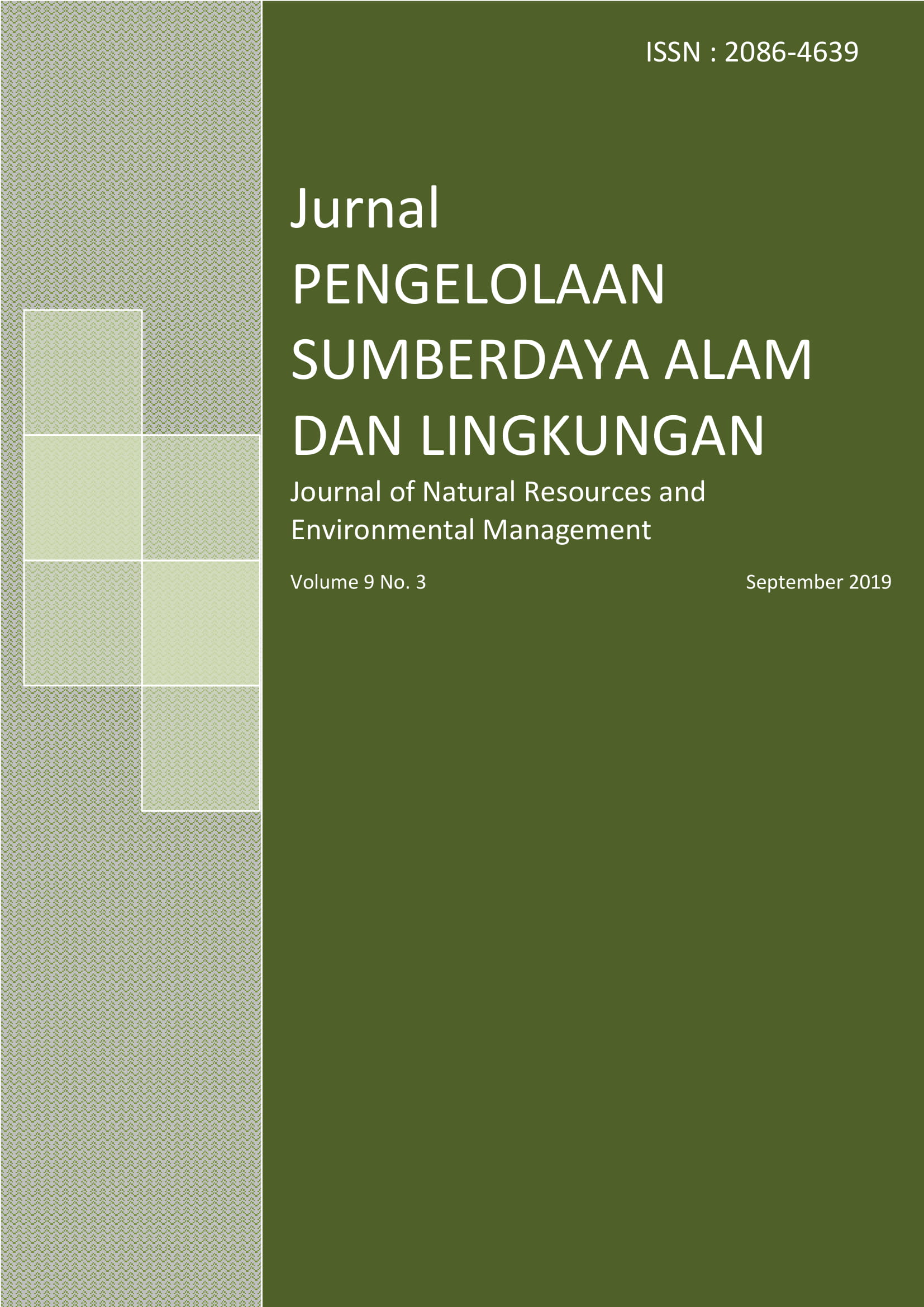KARAKTERISTIK LINGKUNGAN TERHADAP KOMUNITAS SERANGGA (Environmental Characteristics of Insect Community)
Abstrak
The poorly managed development of Banyumas Regency causes changes in the quality of the environment. insects can be used as indicators of environmental quality changes. The purpose of this research is to identify the abiotic environmental factors, biotic and potential environmental disturbance to the insect community and to analyze the potential insects as environmental bioindicators. Insect data collection uses four types of traps: pitfall traps, yellowpan traps, sweep net and malaise traps. data analysis is done by linking the relationship between insect community parameters with environmental parameters. The presence of insects at the study site is influenced by plant wealth, airborne TSP concentration, canopy cover, light intensity, and wind speed. The presence of insects correlates with the increasing environmental factors that support life and decreases against environmental disturbances. Digitonthopagus sp., Polyrhachis sp., Eurema sp. 2, Junonia sp., Neptis sp., Papilio sp., Elymnias sp. can be used as an indicator of habitat conditions with low environmental disturbances. Onthophagus sp3., Oreogeton sp., Appias sp., Trilophidia sp. can be used as an indicator of habitat conditions with high environmental disturbances.
Penulis
TaradiphaM. R. R. (2019) “KARAKTERISTIK LINGKUNGAN TERHADAP KOMUNITAS SERANGGA (Environmental Characteristics of Insect Community)”, Jurnal Pengelolaan Sumberdaya Alam dan Lingkungan (Journal of Natural Resources and Environmental Management). Bogor, ID, 9(2), hlm. 394-404. doi: 10.29244/jpsl.9.2.394-404.
##submission.howToCite.downloadCitation##
##plugins.generic.citationStyleLanguage.download.ris##
##plugins.generic.citationStyleLanguage.download.bibtex##
Authors who publish with this journal agree to the following terms:
- Authors retain copyright and grant the journal right of first publication with the work simultaneously licensed under a Creative Commons Attribution License that allows others to share the work with an acknowledgement of the work's authorship and initial publication in this journal.
- Authors are able to enter into separate, additional contractual arrangements for the non-exclusive distribution of the journal's published version of the work (e.g., post it to an institutional repository or publish it in a book), with an acknowledgement of its initial publication in this journal.
- Authors are permitted and encouraged to post their work online (e.g., in institutional repositories or on their website) prior to and during the submission process, as it can lead to productive exchanges, as well as earlier and greater citation of published work (See The Effect of Open Access).
Rincian Artikel
Withaningsih S. (2025)
Correlation Between Flying Insect Diversity and Environmental Factors in Various Land Use Types in Paseh District, Sumedang Regency, West Java. Diversity, 17(1), 10.3390/d17010002
Umami S. (2024)
Butterflies (Lepidoptera: Papilionoidea) diversity in Kedung Klurak Tourism Area, Mojokerto District, East Java, Indonesia. International Journal of Tropical Drylands, 8(1), 27-34.10.13057/tropdrylands/t080104
Haneda N.F. (2024)
The potential of longhorn beetles (Coleoptera: Cerambycidae) as bioindicators at IPB Dramaga Campus. IOP Conference Series: Earth and Environmental Science, 1433(1), 10.1088/1755-1315/1433/1/012007
Parida I. (2023)
Variations in species diversity and the role of butterflies in oil palm agroecosystems at PT BSM South Sumatra. IOP Conference Series: Earth and Environmental Science, 1243(1), 10.1088/1755-1315/1243/1/012014
Damayanti A. (2023)
Soil arthropod diversity in three different land management intensities of Wanagama Forest, Yogyakarta, Indonesia. Biodiversitas, 24(3), 1799-1808.10.13057/biodiv/d240355
Dharmawan D.P.R. (2022)
Diversity of Dragonflies (Odonata) at Pancur Resort Alas Purwo National Park, Indonesia. Borneo Journal of Resource Science and Technology, 12(2), 57-62.10.33736/bjrst.4668.2022
Utami S. (2021)
Pests of Sonneratia caseolaris seedlings in the mangrove restoration area nursery of Berbak-Sembilang National Park and its damage. IOP Conference Series: Earth and Environmental Science, 914(1), 10.1088/1755-1315/914/1/012019
Nuraeni S. (2021)
Identification of insects associated with ebony (Diospyros celebica Bakh.) as an endemic tree to Sulawesi. IOP Conference Series: Earth and Environmental Science, 886(1), 10.1088/1755-1315/886/1/012037
Paga B. (2021)
Characteristics of vegetation as determinant of Timor Friarbird (Philemon inornatus) distribution in Bipolo Lanscape of West Timor Island, Indonesia. Biodiversitas, 22(5), 2617-2635.10.13057/biodiv/d220521
Apriyani S. (2021)
Diversity of insect on cowpea cropping in rainfed land. IOP Conference Series: Earth and Environmental Science, 739(1), 10.1088/1755-1315/739/1/012068
Desantoro T.G. (2020)
Bird community responses to several habitat types in Artificial Ecosystems in PT PJB UP Paiton Region. Jurnal Pengelolaan Sumberdaya Alam dan Lingkungan, 10(3), 489-500.10.29244/jpsl.10.3.489-500






